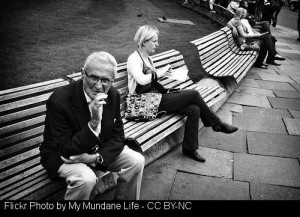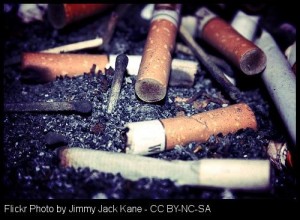 (NAPS)—While lung cancer is the leading cause of cancer death in the United States, sometimes, the most common type—non-small cell lung cancer—can be cured if it is found early enough.
(NAPS)—While lung cancer is the leading cause of cancer death in the United States, sometimes, the most common type—non-small cell lung cancer—can be cured if it is found early enough.
More than 200,000 Americans are diagnosed with lung cancer each year. Smoking is the single largest risk factor and is responsible for about 85 percent of lung cancer cases in the United States. The more a person smokes over time, the more likely it is that he or she will get the disease. The risk of lung cancer also increases with age, with most people developing the condition after age 55.
The most important way to prevent lung cancer is to stop smoking and limit exposure to tobacco smoke.
For heavy smokers who have not been able to quit or who smoked for a long time before quitting, there is now evidence that screening can prevent a large number of lung cancer–related deaths. Screening is important because lung cancer has no symptoms in its early stages. Most cases of lung cancer are not detected until a person has symptoms, usually after the disease is already at an advanced stage.
Who Should Be Screened?
The U.S. Preventive Services Task Force (Task Force) now recommends yearly lung cancer screening using low-dose computed tomography (also known as a CT scan) for people who are at high risk for lung cancer. People are considered to be at high risk if they:
- Are between 55 and 80 years old
- Have a history of smoking for 30 “pack-years” or more
- Are either a current smoker or quit within the past 15 years.
Pack-years are determined by multiplying the number of packs (which typically contain 20 cigarettes) smoked daily by the number of years a person has smoked. For example, you would have a 30 pack-year history if you smoked a pack of cigarettes a day for 30 years, two packs a day for 15 years, or half a pack a day for 60 years.
The goal of screening for lung cancer is to detect the cancer at an early stage so that it can be successfully treated. There are other types of tests that also screen for lung cancer, but the Task Force found that low-dose CT scans are the most accurate for finding cancer early.
Why Not Screen Everyone?
Not everyone should be screened for lung cancer, not even all smokers. This is because there are some risks from low-dose CT scans and these are greater for people who are not at high risk for lung cancer. For example, people are exposed to a small amount of radiation during a CT scan. Repeated exposure to this radiation can actually cause cancer in healthy people. Also, people at lower risk are more likely to have a false-positive test result (a test result that shows a person has a disease when he or she does not). False-positive results can cause anxiety and can lead to follow-up tests and surgeries that aren’t beneficial and have their own significant risks. In addition, screening is not beneficial for people who would be unable (because of poor health) or unwilling to undergo treatment for lung cancer. Treatment involves surgery to remove the cancerous part of the lung.
Before Screening,
It’s important to remember that getting screened for lung cancer is not an alternative to quitting smoking. Quitting smoking is still the best way to reduce your risk of developing and dying from lung cancer. The Centers for Disease Control and Prevention offers a toll-free quit line ((800) QUIT-NOW) and a text messaging service (Text QUIT to 47848) to help you get started. See your primary care clinician to discuss ways to help you quit smoking if you still smoke.
How To Get Screened
The Affordable Care Act requires private insurance companies to cover the cost of lung cancer screening for eligible enrollees, without a co-payment. Additionally, the Centers for Medicare & Medicaid Services recently decided to cover yearly lung cancer screening for people with Medicare who are between 55 and 77 years old and are otherwise considered “high risk” as defined by the Task Force.
If your clinician thinks screening is right for you, check with your health insurance company to see if the cost of screening would be covered and what requirements need to be met for coverage. Then, work with your primary care clinician to find an accredited imaging facility that has experts who are experienced and knowledgeable about lung cancer screening.
Recommendations To Protect Your Health
The Task Force is an independent group of national experts in prevention and evidence-based medicine. The aim of its work is to evaluate and identify critical preventive health services that primary care professionals can perform.
For more information and to read the full report on screening for lung cancer, visit www.uspreventiveservicestaskforce.org
Cynthia Lopinto
Latest posts by Cynthia Lopinto (see all)
- Honey Chocolate–Covered Pretzels - April 3, 2018
- True Colors - April 3, 2018
- Spring Cleaning…You’ve Gotta Be Kidding - April 2, 2018
- Should You Stay In Your Home Or Move During Retirement? - April 2, 2018
- Hawaiian Plants For Good Health - April 2, 2018
 Home Front Magazine A Publication for Seniors
Home Front Magazine A Publication for Seniors


